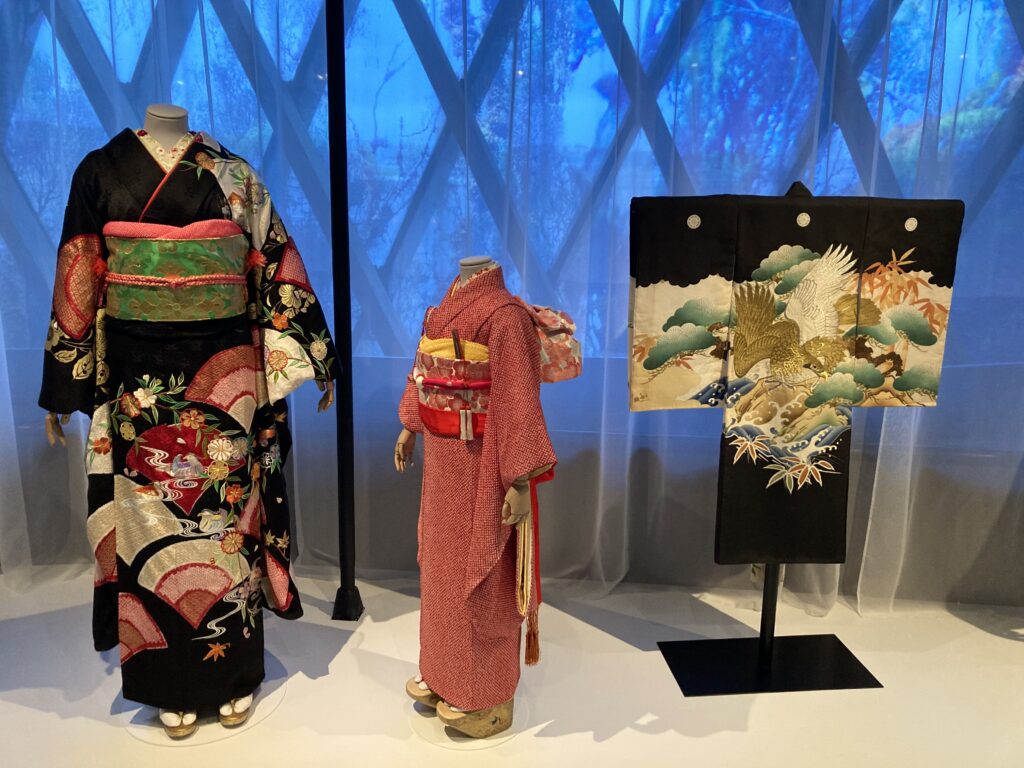KIMONO : since its opening in 2006, the musée du Quai Branly has been introducing visitors to the arts and civilisations of Africa, Asia, Oceania and the Americas with exceptional collections. From November 22, 2022 to May 28, 2023, Japan will be in the spotlight with a temporary exhibition on the fascinating history of the kimono. In this article, Hotel Trianon Rive Gauche invites you to discover this exhibition by sharing its visit with you.
The origins of the kimono
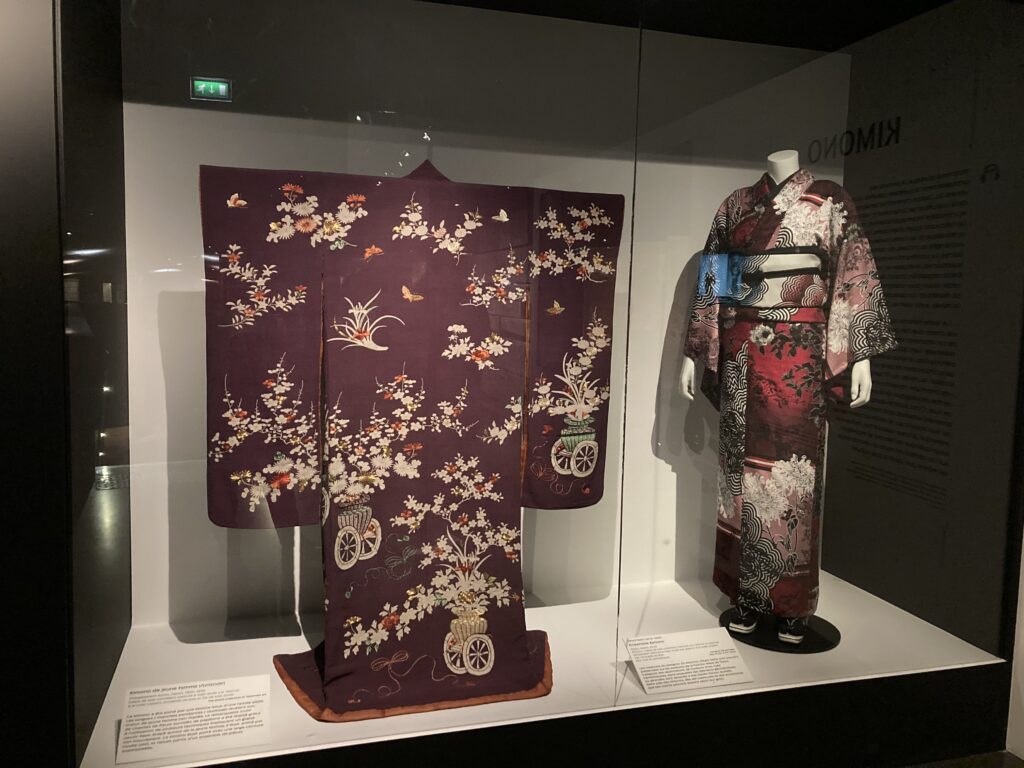
The kimono, symbol of the traditional Japanese culture, became widespread in Japan in the 13th century, during the Edo period. Prior to this era, the kimono was reserved for the samurai, the highest social class in the rigid Japanese system. This period of peace saw the hierarchical order change. With peace, the lower social classes such as farmers and merchants became considerably richer and began to wear the kimono.
Strict codes
The kimono is a unisex and intergenerational clothing. It is worn by men, women, boys and girls alike! Its fabrics, colours and cuts give a lot of information about its owner. This green kimono, for example, belongs to a married woman. Indeed, you will notice that its sleeves are short. On the other hand, the purple kimono above with very long sleeves belonged to a single woman who had to be more modest.
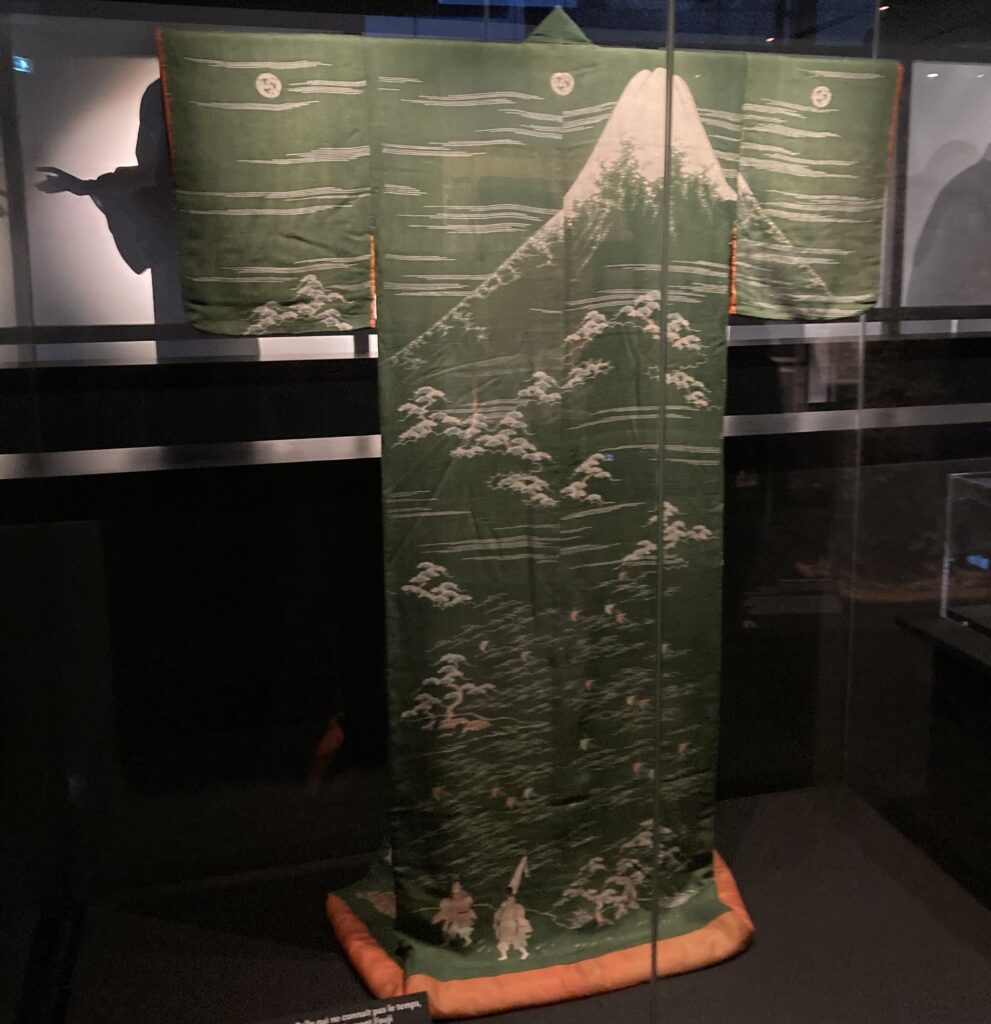
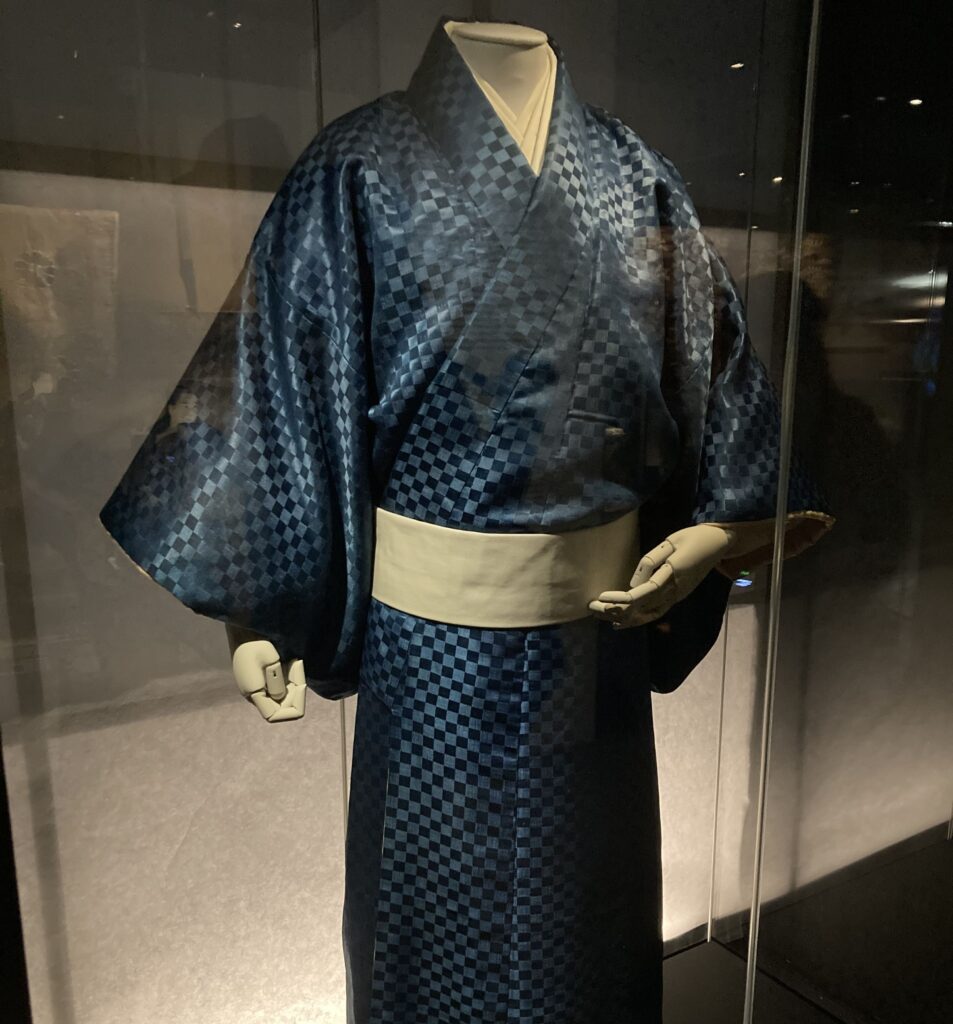
- Colour: women’s kimonos are often more colourful, using bright tones such as purple and pink. More subtle, men’s kimonos are more often black, grey, brown or navy blue as shown here.
- Pattern: as we can see above, the feminine kimono has more imposing patterns representing nature like landscapes, animals or flowers. On the contrary, the masculine kimono is often plain or with very simple patterns.
A unique manufacturing method
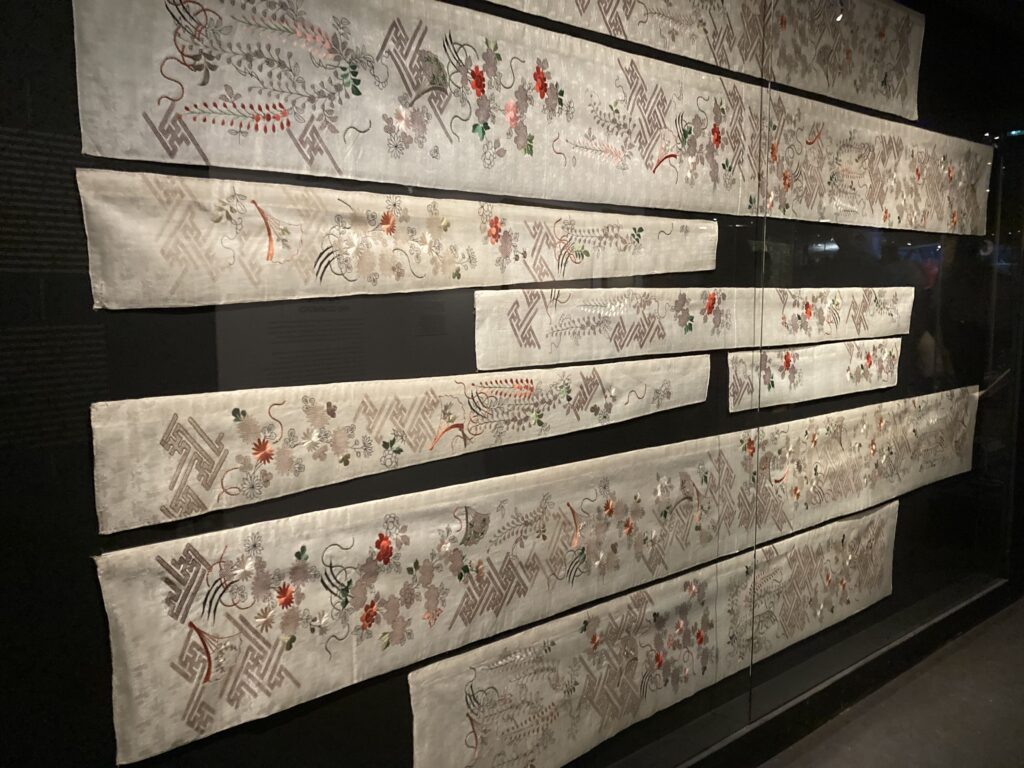
The making of the traditional kimono must follow a precise method. The real kimono must be made of rectangles of fabric like those above. These rectangles are then folded and sewn together vertically: the kimono must not have any horizontal sewing! The kimono must be straight and follow the shape of the owner’s body perfectly. Once worn, the kimono is always closed left side to right side and is held in place by a wide belt called an obi, usually tied in the back.
Different fabrics and weaving techniques
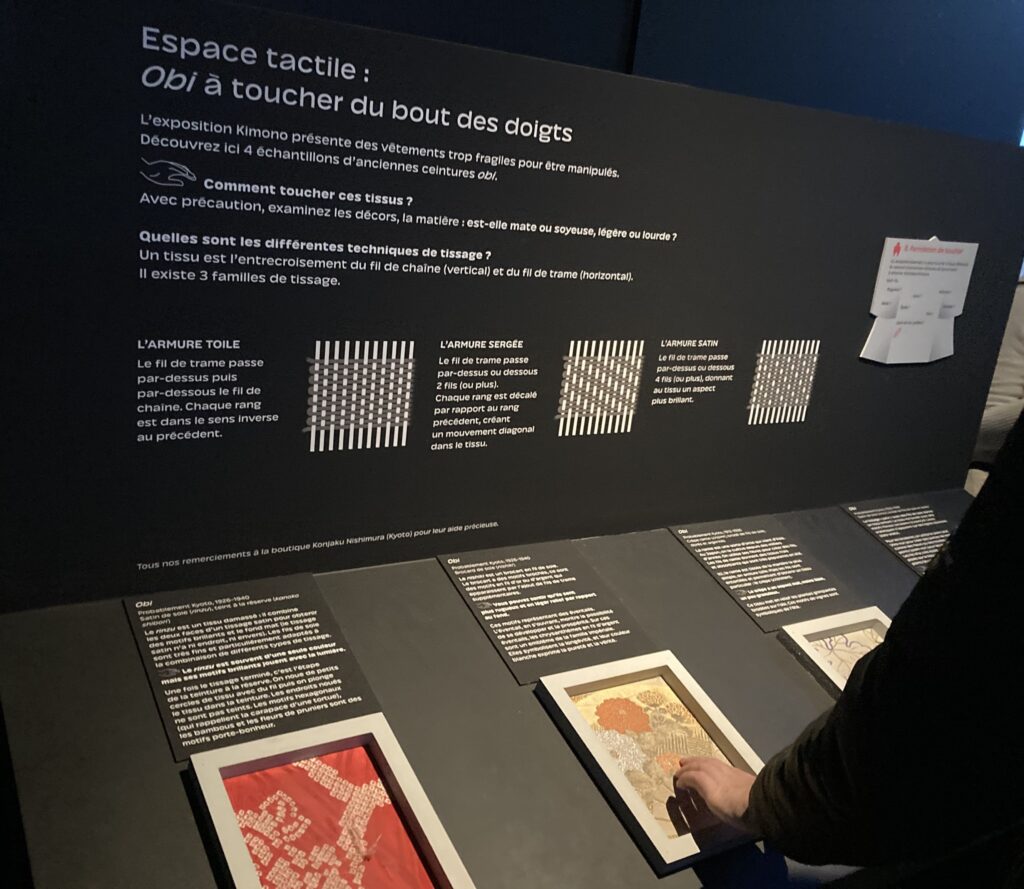
The kimono can be made of silk, hemp or wool: it adapts to all seasons! And for the most curious, the musée du Quai Branly even offers you the possibility to touch different obi. These characteristic Japanese kimono belts can be woven using three different techniques: plain weave, twill weave and satin weave. With these four samples, you can discover by yourself the different materials and textures of each of them.
Its evolution
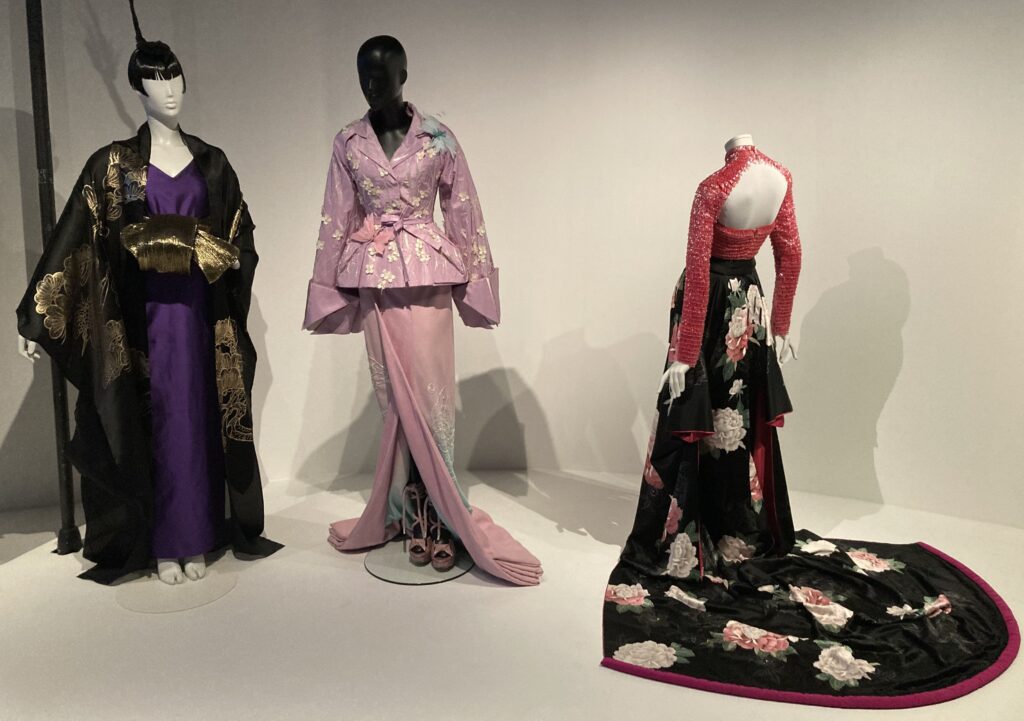
The musée du Quai Branly exhibition presents the kimono over the course of time, from the 13th century to the present day. This visit is a journey through time that illustrates its evolution. At first reserved for the samurai and then spread to Japanese society, the kimono attracted the attention of Europeans at the beginning of the 20th century. Today, the kimono is a source of inspiration for fashion designers who bring it up to date with modern fabrics and cuts.
Your 4-star hotel with direct access to the Musée du Quai Branly

Want to discover exceptional exhibitions during your stay in Paris? Hotel Trianon Rive Gauche is ideally located in the centre of Paris in the 6th arrondissement with direct access to many museums, such as the Quai Branly!
Our beautiful 4-star hotel offers many advantages that will make your stay in Paris unique:
✔️Hotel in the centre of Paris
✔️Rooms with breathtaking views of Paris
✔️Delicious breakfast
✔️A team at your service
✔️A stay committed to sustainable tourism
Want to offer an unusual gift? The possibilities are endless, as are the amounts of our gift cards. Offer a luxurious stay in Paris and an unforgettable gift here!
To make sure you don’t miss anything, follow us on Instagram and Facebook.


